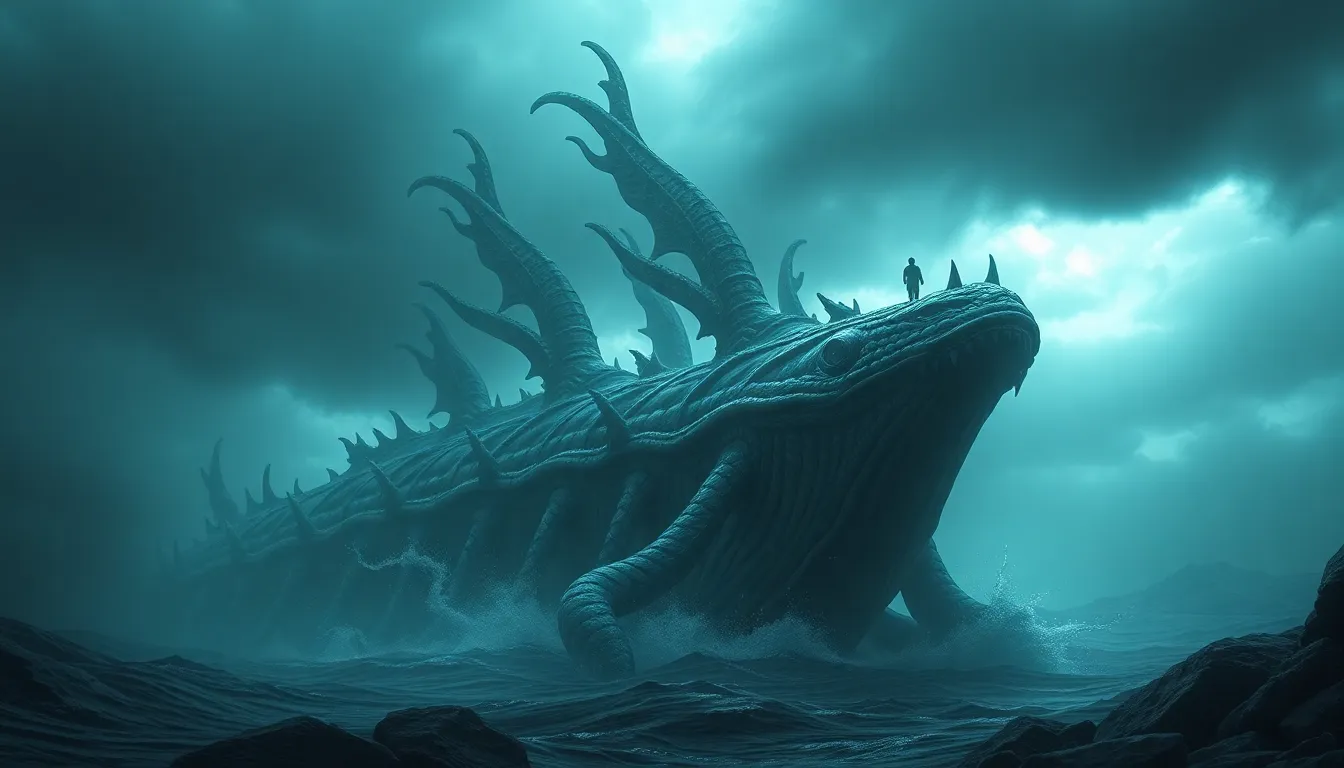Lamia in the Arts: A Visual Exploration of the Serpent Woman Through Sculpture, Painting, and Literature
I. Introduction
Lamia is a figure rooted deeply in Greek mythology, often depicted as a monstrous being with the upper body of a woman and the lower body of a serpent. She is typically portrayed as a tragic figure, embodying themes of loss, transformation, and vengeance. Over centuries, Lamia has transcended her mythological origins, becoming a significant subject in various art forms.
This article aims to explore Lamia’s representation across different mediums including sculpture, painting, and literature. By delving into these artistic expressions, we can gain a deeper understanding of her complex character and the themes she embodies.
II. Historical Background of Lamia
The origins of Lamia can be traced back to ancient Greek mythology, where she was said to be a beautiful queen of Libya who was transformed into a monster by Hera, the wife of Zeus. According to myth, this transformation occurred after Lamia had an affair with Zeus, leading to the loss of her children, which deepened her torment and turned her into a child-eating demon.
Over time, the Lamia myth evolved, adapting to various cultural contexts. In some versions, she is depicted as a seductress who lures men to their doom, while in others, she is seen as a sympathetic figure, a victim of divine wrath. This duality has made her a compelling subject across different ages and civilizations.
Throughout history, Lamia’s cultural impact has been significant, particularly in ancient societies that utilized myths to explain human emotions and natural phenomena. Her story resonates with themes of jealousy, loss, and the consequences of desire, making her a relevant figure in the human experience.
III. Lamia in Sculpture
Notable sculptures depicting Lamia often draw on the rich traditions of ancient Greek and Roman artistry. One famous example is a sculpture from the Hellenistic period that captures her serpentine form in exquisite detail, showcasing the artistic techniques of the time, such as the use of drapery and facial expressions to convey emotion.
Artistic techniques used in Lamia sculptures often include:
- Realistic anatomy that emphasizes her hybrid nature
- Intricate detailing of scales and hair
- Use of dynamic poses to suggest movement and allure
The interpretation of Lamia’s symbolism in three-dimensional form often revolves around the themes of seduction and danger. Artists have used her figure to explore the tension between beauty and monstrosity, portraying her as both a victim and a predator.
IV. Lamia in Painting
Key paintings featuring Lamia vary widely in style and approach. One notable example is John Keats’ poem “Lamia,” which has inspired various artists to depict her in a romanticized light, emphasizing her tragic beauty. In these paintings, Lamia is often shown in lush, dreamlike environments that contrast with her dark narrative.
In analyzing the color, composition, and symbolism in these artworks, we can observe the following:
- Rich, vibrant colors that evoke a sense of enchantment
- Composition that often centralizes Lamia, drawing the viewer’s focus to her
- Symbolic elements such as flowers and shadows that hint at her dual nature
The emotional and thematic resonance of Lamia in visual storytelling is profound. Artists utilize her character to evoke feelings of empathy, fear, and fascination, inviting viewers to reflect on the complexities of love and loss.
V. Lamia in Literature
Lamia has been featured in numerous literary works, with each author offering a unique interpretation of her character. In John Keats’ poem “Lamia,” she is depicted as a tragic figure caught between her desire for love and her monstrous nature. Other authors have approached her from different angles, exploring themes of betrayal and revenge.
A comparison of interpretations across different authors reveals a rich tapestry of meanings associated with Lamia. For instance, in ancient texts, she is often portrayed as a villain, while in modern literature, she can be seen as a victim of circumstance.
Thematic analysis of Lamia often revolves around:
- Love and its transformative power
- Loss and the longing for redemption
- The conflict between human desire and societal norms
VI. Lamia’s Influence on Modern Art
Contemporary artists have drawn inspiration from the Lamia myth, reinterpreting her character in various ways. Artists such as Frida Kahlo and Salvador Dalí have incorporated elements of the myth into their works, exploring themes of identity and transformation.
Reinterpretations and adaptations of Lamia in modern visual culture often reflect current societal issues, such as feminism and the struggle against patriarchal narratives. These interpretations invite audiences to reconsider the implications of Lamia’s story in today’s context.
The role of Lamia in feminist readings of art and literature is particularly noteworthy. She has become a symbol of female empowerment and resistance, challenging the traditional narratives that portray women as mere objects of desire or victims of circumstance.
VII. Thematic Connections Across Mediums
Across different artistic expressions, common themes and motifs associated with Lamia include:
- The duality of beauty and horror
- The consequences of desire and jealousy
- The exploration of identity and transformation
The interplay between visual and literary representations of Lamia enriches our understanding of her character. While sculptures and paintings capture her form and allure, literature delves into her psyche, exploring her emotions and motivations.
Throughout history, the evolution of Lamia’s character has reflected changing societal attitudes towards women and power. As artists and writers reinterpret her story, they continue to challenge and expand upon the themes she embodies.
VIII. Conclusion
In summary, Lamia’s significance in the arts is multifaceted, encompassing themes of love, loss, and transformation. Her portrayal in sculpture, painting, and literature reveals a complex character who continues to resonate with contemporary audiences.
The ongoing relevance of the Lamia myth in modern culture invites us to reflect on the human experience and the stories we tell. As we explore and appreciate Lamia in various art forms, we engage with the timeless themes that her character embodies, encouraging a deeper understanding of ourselves and the world around us.



